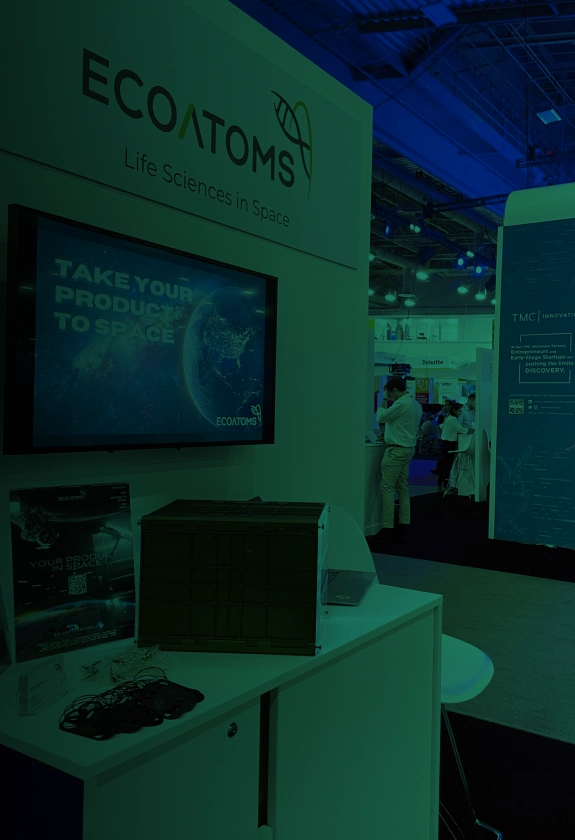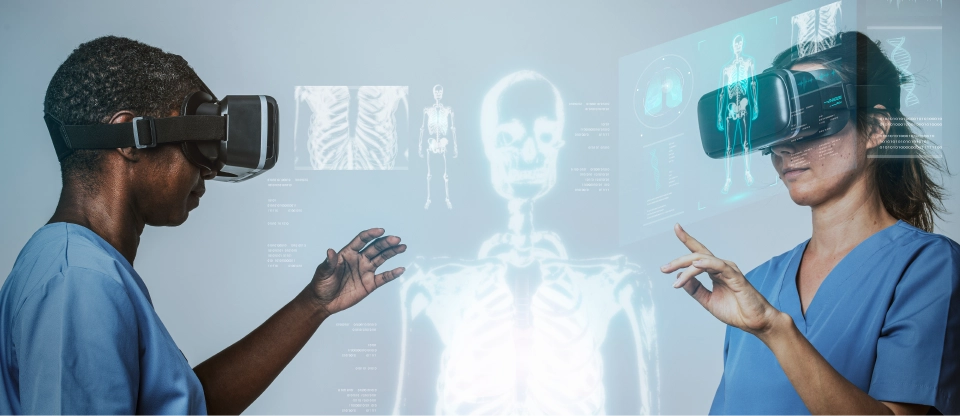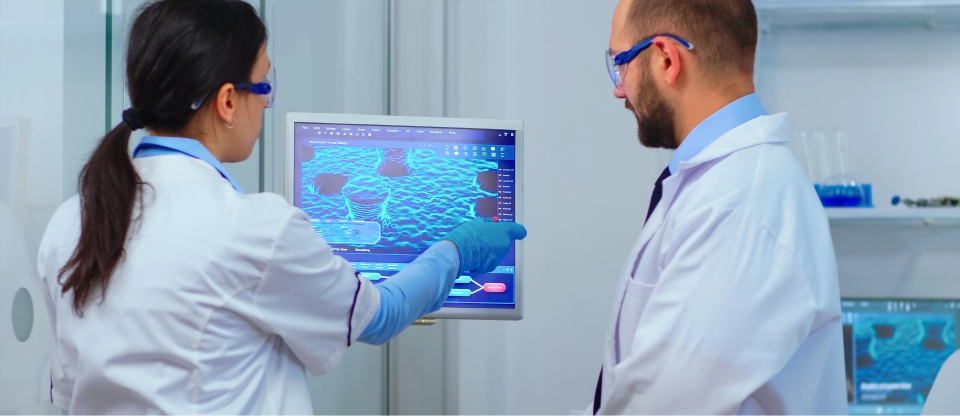INTRODUCTION
Space as a platform for innovative healthcare product development
Once the preserve of national agencies, space has gradually opened up to the private sector for various commercial activities. Ever since NASA permitted visits to the International Space Station (ISS) in low Earth orbit, it has turned into a laboratory for experiments.
Pursue healthcare product innovation and pharmaceutical research have taken wings, capitalizing on the unique characteristics of space to gather fresh insights. First, microgravity –allows the deep study of altered growth and function of cells and tissues, essential for regenerative medicine; secondly, radiation–exposure can induce chemical reactions and lead to discoveries of new drug candidates; thirdly, the near-vacuum of outer space – means reduced contamination, which helps to maintain the purity and integrity of biological material in medical research on healing, bone health, and muscle atrophy.
While the bigger companies and their research regularly make headlines, many start-ups are venturing into space to pursue healthcare product innovation. What are the niches that they are making forays into?
CHARACTERISTICS
Why is space-based healthcare technology a big draw?
The unique characteristics of space mentioned above extend the potential of healthcare through the discovery and application of new and improved bioproducts. Entrepreneurs with a zeal to make a difference to mankind hence choose to further their work in the controlled environment offered by space to take advantage of:
Faster-aging mechanism
Due to the weightlessness in space, there is no load on bones and muscles and, hence, no mechanical stress. This decreases bone density, and muscle atrophy sets in at a faster rate than on Earth. Such physiological changes are similar to those in age-related conditions like osteoporosis and sarcopenia, making space an ideal observatory and testing ground for old-age-related medical conditions and potential therapies.
Complex tissue generation
In a microgravity environment, cells form a 3D structure close to human tissue. On Earth, bio-printing, a layer-by-layer deposit of bio-inks (made of hydrogel), provides the 3D scaffolding needed to build tissue. However, these bio-inks should have high viscosity to defy gravity, and high viscosity adversely affects cell biology. Hence space is better suited for 3D printing of complex tissues needed for grafts and transplantation.
Well-defined protein structure
Convection and sedimentation are minimized in space, and this creates conditions that are conducive to the formation of pure, uniform, and defect-free crystals. This facilitates the study of structures of proteins linked to disorders and drug discovery. The growth of better protein crystals in space also makes way for new treatments and drug formulations that are easier to store or can be administered in different forms.
Modified gene expression
The expression of genes changes in space, which impacts DNA instructions given to cells. This has triggered a range of studies on how system-wide changes in the body, including environment-related changes in gene expression and metabolism, are linked to risk factors for diseases like atherosclerosis. The multi-OMICS data (biological molecular-level metrics) of astronauts from NASA is continually being mined for fresh opportunities in digital innovation in healthcare.
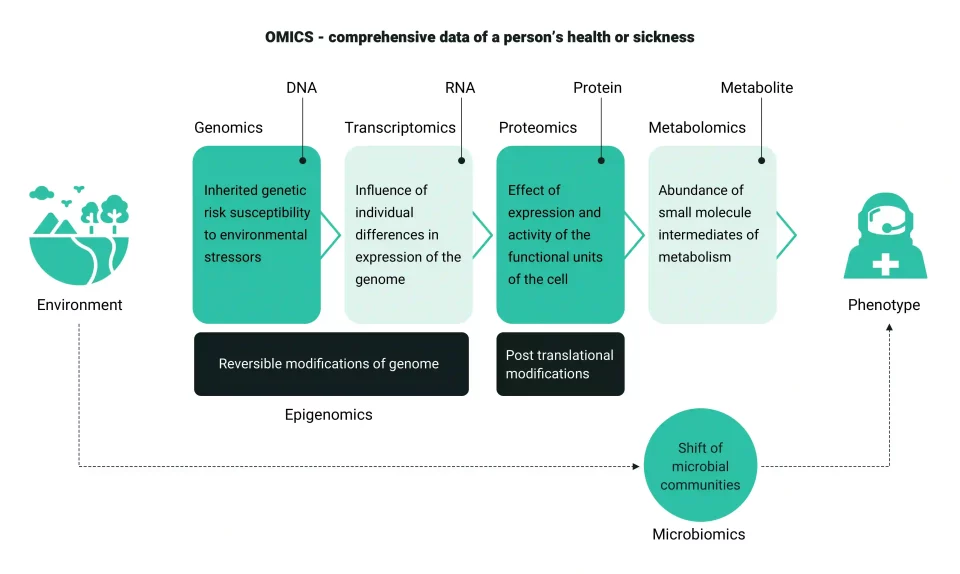 Space OMICS-based medicine is personalized, predictive, preventive, and participatory
Space OMICS-based medicine is personalized, predictive, preventive, and participatory
BREAKTHROUGHS
Health solutions from space headed for Earth
Entrepreneurial interest in complex healthcare challenges is sparked partly due to the easy access to space but also because there is a rising need for trusted technology partners to exploit the frontiers of emerging space medicine. This is to answer the predictive health needs of astronauts, space tourists, and humans on Earth.
The facilitators
Biomanufacturing is the most vibrant among space medicine solutions and is dominated by regenerative processes, with the number of players increasing. Space payloads, small satellites, space missions, microgravity R&D services, and space healthcare tools are now offered by innovative medical software developing companies that are suppliers of equipment and technology to clients who wish to develop an idea.
One such company is focused on bio-fabrication: organs-on-chips, manufacturing biomaterials for biomedical needs, novel coatings for bio-sensor applications, bio-printing of multi-tissue systems, and radiation shielding for medical and space applications. Indeed, a one-stop-shop for all your space medicine needs! As a trusted healthcare technology partner, it follows good manufacturing practices so that the solution developed on its payload in space can be deployed on Earth, too.
The orbital labs
The commercialization of spaceflight has seen the emergence of a large number of companies hosting bio labs in spacecraft and space stations. We are not talking of well-known names like Virgin Galactic, Blue Origin, Aerostar, UP Aerospace, and World View, but other smaller ones who are making a mark. Though they conduct their own cutting-edge research to unravel complex healthcare challenges, they also offer the service of in-space manufacturing to others.
One such company has offered to research and develop active pharmaceutical ingredients for a share of the profits of any drug developed off-world in the form of royalties. It has completed its experiments around the drug ritonavir and has sought approval for the re-entry of the capsule with the pharmaceutical material -developed by an automated fabrication system -on board.
The experimenters
NASA astronauts routinely conduct experiments in space, while academic institutes fund interesting projects to find solutions to complex healthcare challenges that travel to other planets like Mars may throw up in the future.
One such quest for the manufacture of just-in-time medicines has seen the development of a gastric drug delivery device ingested by an astronaut like a pill. It is designed to produce melatonin, caffeine, and acetaminophen for sleep disorders, headaches, and other pains.
Work is on to include a wider range of conditions as well as plausible applications on Earth to improve patient adherence to medications like TB, malaria, Alzheimer’s disease, and mental disorders. Researchers have genetically modified lettuce to synthesize drugs that protect against bone density loss and blood cell recovery.
The problem-solvers
To find treatment for various diseases, one company is engaged in the production of induced pluripotent (can be turned into any cell) stem cells in large batches in space to be used for commercial personalized medicine applications on Earth. Another company is making protein-based artificial retinas, which promise a cure for loss of sight due to age-related macular degeneration and retinitis pigmentosa.
The synthetic protein is similar to the visual pigment rhodopsin that is naturally found in our eyes, and the retina mimics the light-absorbing properties of human photoreceptors and is capable of activating neural cells still present in degenerated retinas of blind patients.
PATIENT CARE
Astronauts as point-of-care and patient engagement
Healthcare technology consultants play a multifaceted role in developing new spaced-enhanced healthcare technologies. What about the role of astronauts and their healthcare? That they need to adopt a data-driven lifestyle in space with the seamless use of technologies to help crew collaborate with mission control is clear.
By 2030, when the ISS is decommissioned, and commercial operators take over, the scope for the use of digital technologies in space will expand as NASA turns its attention to the Moon and Mars. Crew members will need health risk mitigation through remote patient monitoring toolkit, healthcare diagnostics in microgravity, precision medicine interventions, AI-based prevention, and so on. The opportunity to build an end-to-end digital health ecosystem in space will call for an army of trusted technology partners who are committed to resolving complex healthcare challenges.
An integrated health monitoring system will require adequate computational capabilities, digital biomarkers for health status assessment, clinical decision support tools, AI algorithms tailored for space biology, and a slew of innovative healthcare product innovations.
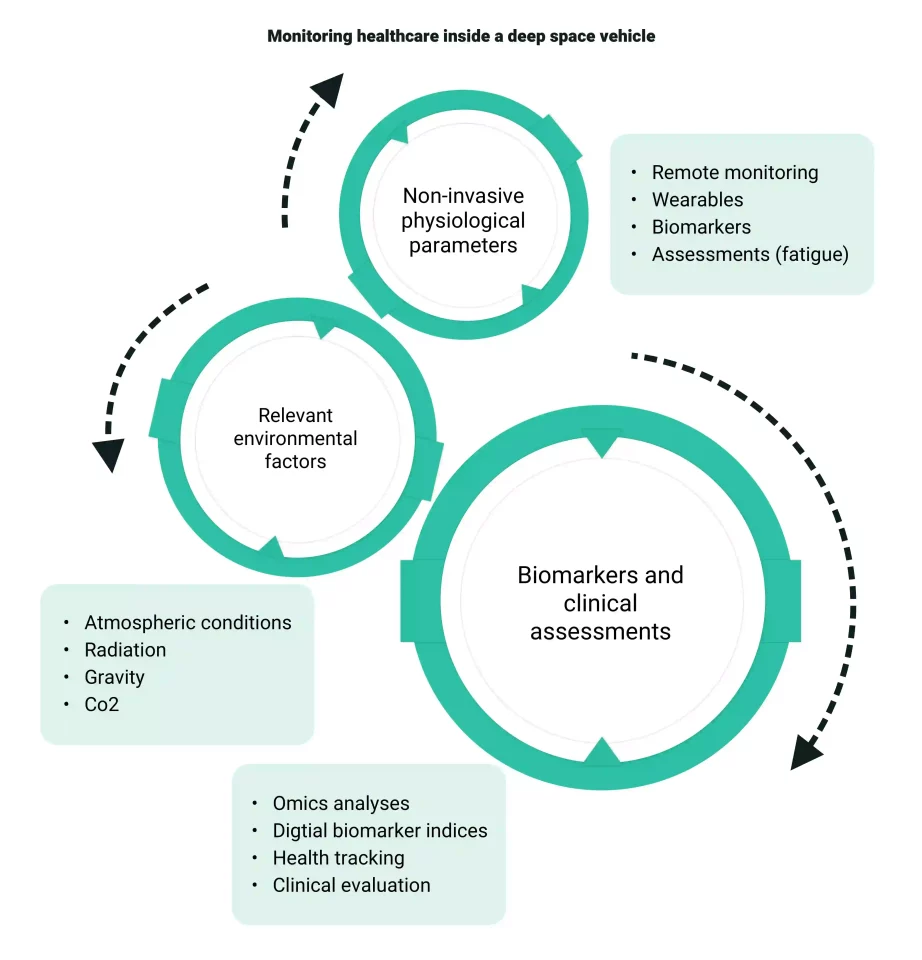 In-flight autonomous data generation is key to astronaut health
In-flight autonomous data generation is key to astronaut health
Health monitoring can be carried out in innovative ways to involve astronauts in decision-making with easy access to their health parameters. Here are some that leverage disruptive technologies:
- Use of deep learning algorithms to mine the genomic databases of astronauts leads to predictive suggestions for change in lifestyle and diet.
- Use of vein scanners through augmented reality and device-assisted blood sample drawing in zero gravity.
- Use of smart shirts with remote health monitoring software tracks vital signs, sleep quality, and activity levels during a mission.
- Use of voice biomarkers, chatbots, and AI algorithms to support diagnosis and medical decision-making by scanning available literature.
- Use of telemedicine robots to perform assistive functions and provide medical services.
As many of the technologies are already in use terrestrially, adaptation for use in space should not be a major challenge in the coming days. In conclusion, the ongoing research and development in space for use on Earth and on Earth for use in space promise a brave new future.
